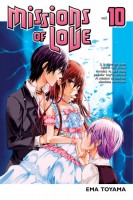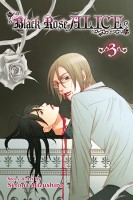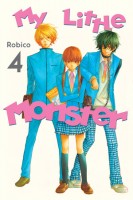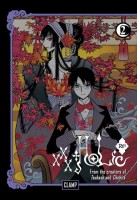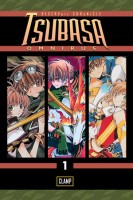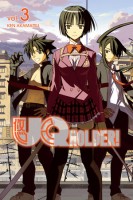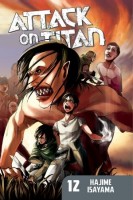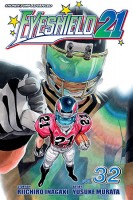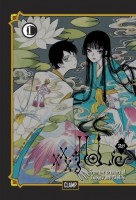My News and Reviews
Well, it wasn’t really intentional, but last week at Experiments in Manga was apparently Viz Media week. Both of the in-depth manga reviews posted as well as the most recent manga giveaway feature Viz Media titles. The winner of this month’s giveaway will be announced on Wednesday, so there is still time to enter for a chance to receive Chika Shiomi’s Yukarism, Volume 1. The first review posted last week was of JoJo’s Bizarre Adventure, Part 1: Phantom Blood, Volume 1, the very beginning of Hirohiko Araki’s long-running, outlandish, supernatural epic. It can be pretty brutal and the manga certainly won’t be to everyone’s taste, but I’m very happy to finally see it being released in English. Over the weekend I posted my review of Aya Kanno’s Requiem of the Rose King, Volume 1, a moody historical fantasy inspired by William Shakespeare’s Henry VI and Richard III. The debut of this series was one of the manga I was most looking forward to this year. I’m very happy to say that I loved it.
And speaking of Aya Kanno, it was recently announced that she will be one of the featured guests at this year’s Toronto Comic Arts Festival! (TCAF is currently the only large comics event that I attend.) Gengoroh Tagame, who was a featured guest in 2013, will be returning to TCAF this year as well. Ken Niimura (whose collection of short manga Henshin I thoroughly enjoyed and reviewed back in February) will also be an exhibitor. And since I mentioned Niimura, I would also like to point out Organization Anti-Social Geniuses’ interview with him from last week. Completely unrelated to TCAF, Seven Seas made a new license announcement—the first volume of Arata Yamaji’s manga series A Certain Scientific Accelerator is currently scheduled for release in October.
Quick Takes
 The Man of Tango by Tetuzoh Okadaya. Originally licensed but never actually published by Aurora’s Deux Press, I was very happy when Sublime Manga picked up Okadaya’s boys’ love manga The Man of Tango. The English-language edition of The Man of Tango includes the story’s debut one-shot as well as previously unpublished material, making it the most complete version of the manga currently available. Though technically a boys’ love manga, with its burly character designs and emphasis on physicality, the tone of The Man of Tango is fairly masculine and the volume feels more like a gay manga. (Interestingly enough, Okadaya apparently didn’t even know what BL was before being invited to create the story.) As can be safely assumed from the title alone, tango plays a very prominent role in The Man of Tango. Dance is portrayed as a means of passionate expression and communication. Angie is a skilled dancer who teaches Argentine tango in Japan. Although he has been in many relationships, it isn’t until he meets Hiro, who exhibits a natural talent for tango, that he has completely fallen for someone.
The Man of Tango by Tetuzoh Okadaya. Originally licensed but never actually published by Aurora’s Deux Press, I was very happy when Sublime Manga picked up Okadaya’s boys’ love manga The Man of Tango. The English-language edition of The Man of Tango includes the story’s debut one-shot as well as previously unpublished material, making it the most complete version of the manga currently available. Though technically a boys’ love manga, with its burly character designs and emphasis on physicality, the tone of The Man of Tango is fairly masculine and the volume feels more like a gay manga. (Interestingly enough, Okadaya apparently didn’t even know what BL was before being invited to create the story.) As can be safely assumed from the title alone, tango plays a very prominent role in The Man of Tango. Dance is portrayed as a means of passionate expression and communication. Angie is a skilled dancer who teaches Argentine tango in Japan. Although he has been in many relationships, it isn’t until he meets Hiro, who exhibits a natural talent for tango, that he has completely fallen for someone.
 Say I Love You, Volumes 5-6 by Kanae Hazuki. I become more and more impressed with Say I Love You the more I read of the series. Hazuki has captured the turmoil and insecurities of adolescence incredibly well. Sometimes the characters do seem a little wise or mature for their age, but generally the series remains well within the realm of believability. At the very least, the constantly shifting and messy interpersonal relationships of the series feel very realistic. Say I Love You excels at character growth and development. The recent introduction of new characters have complicated matters greatly for Mei and Yamato. Kai has started to develop feelings for Mei and he tends to be honest to a fault, which results in a significant amount of drama and strife as Yamato struggles with how to deal with his jealously. Another source of discord is Megumi. Her advances were rejected by Yamato and so she is doing everything that she can to disrupt Mei’s friendships and make her miserable. Mei, who is still learning to have confidence in herself and in her relationships with other people, is particularly susceptible to this sort of attack.
Say I Love You, Volumes 5-6 by Kanae Hazuki. I become more and more impressed with Say I Love You the more I read of the series. Hazuki has captured the turmoil and insecurities of adolescence incredibly well. Sometimes the characters do seem a little wise or mature for their age, but generally the series remains well within the realm of believability. At the very least, the constantly shifting and messy interpersonal relationships of the series feel very realistic. Say I Love You excels at character growth and development. The recent introduction of new characters have complicated matters greatly for Mei and Yamato. Kai has started to develop feelings for Mei and he tends to be honest to a fault, which results in a significant amount of drama and strife as Yamato struggles with how to deal with his jealously. Another source of discord is Megumi. Her advances were rejected by Yamato and so she is doing everything that she can to disrupt Mei’s friendships and make her miserable. Mei, who is still learning to have confidence in herself and in her relationships with other people, is particularly susceptible to this sort of attack.
 xxxHolic, Omnibuses 3-4 (equivalent to Volumes 7-12) by CLAMP. I only read the first few volumes of xxxHolic when it was initially being published in English by Del Rey Manga, so the material included in these omnibuses is completely new to me. While Watanuki still tends to be extreme in his reactions—quickly moving between utter joy and absolute despair—for the most part the tone of xxxHolic has started to even out and the balance between the series’ humor and the horror is better. There continue to be comedic elements, but the manga’s more serious nature has come to the forefront. Though frequently it’s deliberately cryptic, at times the manga can actually be fairly thought-provoking. xxxHolic has turned out to be far less episodic than I thought it was going to be. Some of the chapters don’t have a dramatic or direct impact on the story, but an overarching plot has developed. The series also ties in with Tsubasa: Reservoir Chronicle, but the connection between the two manga occasionally seems a little forced. I find that I enjoy xxxHolic more when it’s completely free to be its own work.
xxxHolic, Omnibuses 3-4 (equivalent to Volumes 7-12) by CLAMP. I only read the first few volumes of xxxHolic when it was initially being published in English by Del Rey Manga, so the material included in these omnibuses is completely new to me. While Watanuki still tends to be extreme in his reactions—quickly moving between utter joy and absolute despair—for the most part the tone of xxxHolic has started to even out and the balance between the series’ humor and the horror is better. There continue to be comedic elements, but the manga’s more serious nature has come to the forefront. Though frequently it’s deliberately cryptic, at times the manga can actually be fairly thought-provoking. xxxHolic has turned out to be far less episodic than I thought it was going to be. Some of the chapters don’t have a dramatic or direct impact on the story, but an overarching plot has developed. The series also ties in with Tsubasa: Reservoir Chronicle, but the connection between the two manga occasionally seems a little forced. I find that I enjoy xxxHolic more when it’s completely free to be its own work.



